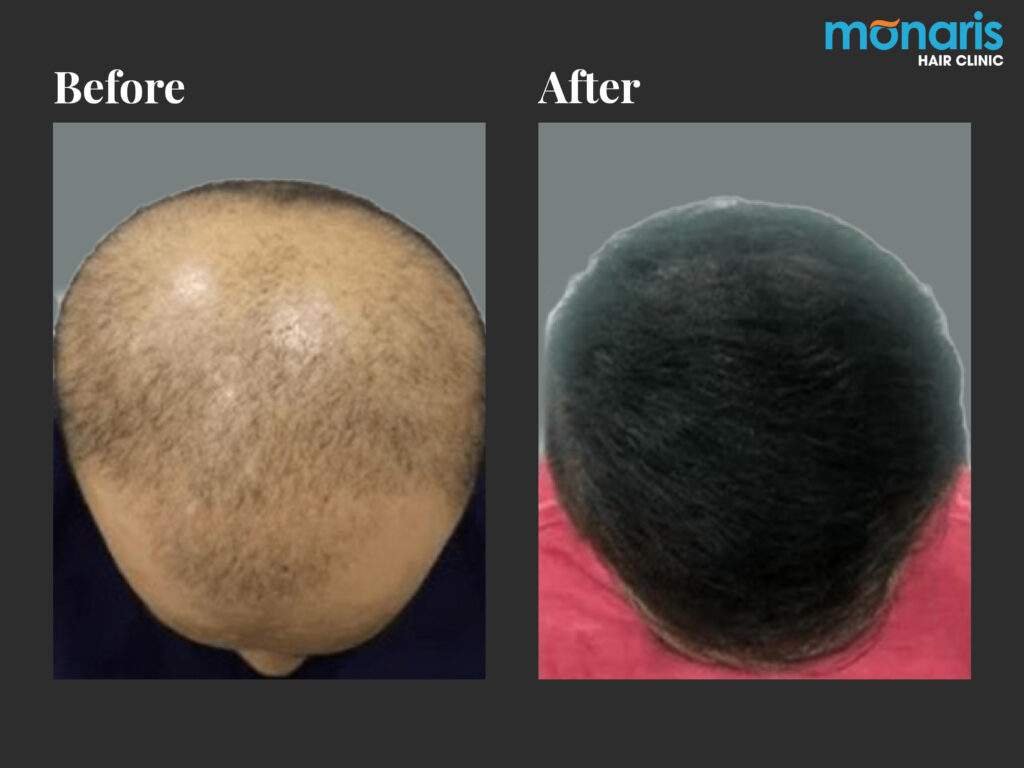Best Hair Transplant in India | Monaris Hair Clinic | New Delhi & Indore
HAIR TRANSPLANT REPAIR
Monaris Hair Clinic
Hair Transplant Repair at Monaris





Monaris Hair Clinic
Hair Transplant Repair at Monaris
Monaris Transplant Clinic’s team is experienced in restoring the outcomes of faulty hair transplants performed by other facilities. It is especially crucial to have faith in the doctors treating you if you are attempting to repair a transplant that you are unhappy with. It’s critical that your valuable donor hair is used intelligently, and that a long-term strategy is devised to make the most of this finite resource.
Why does Hair Transplant fail?
There are a number of factors that can lead to a failed or a bad transplant. To mention a few of them are:
Inexperienced Surgeon
In Delhi and the surrounding places consist of inundated doctors that are inexperienced and do not have the skills and are unaware of the meticulous methods including Autologous Hair Transplant, Follicular Unit Extraction, and Follicular Unit Transplantation which are the most common transplant procedures. Hair transplants are treated as an “add-on” service by these novice surgeons, rather than a specialization that requires expertise and ability.
Improper Graft Handling
Improper graft handling is one of the most prevalent blunders made by unskilled surgeons. The transplant must be handled carefully and positioned appropriately for the hair roots to thrive, this requires a skill that demands accuracy, agility, and expertise. When a transplant is treated incorrectly, the hair follicles can dry up, resulting in the graft’s loss and failure to produce hair.
Ineligible Candidate
While transplants are an effective treatment option for baldness, however, not everyone is a good candidate. Some people have thinning hair but aren’t ready for a transplant yet. Also, for those with pre-existing medical or genetic disorders like alopecia areata, a hair transplant may not be the best option. Your hair transplant specialist should be able to assess your medical history and investigate potential future hair loss to ensure that your treatment will last for years.
How do you fix a botched hair transplant?
Fixing a botched transplant or reversion hair transplant is more difficult than doing first-time surgery on a patient, this requires the surgeon to have more experience and understanding. The sort of repair work required is determined by the issues that the patient is experiencing. For instance, if there is substantial scarring, a surgeon may be able to remove the scars and then close the region, or a surgeon may be able to transplant hair into the scarred area. The grafts may be removed and replanted to make them look more natural if a patient has very obvious, ‘plug’-style hair follicles as a result of their prior surgeon employing outmoded techniques. In many circumstances, an expert surgeon may also repair a poorly constructed hairline. However, you’ll need to meet with your surgeon first to examine the extent of the damage caused to opt for a corrective hair transplant.
How do you fix a bad hair transplant?
Fixing a bad hair transplant can be a complex and delicate procedure that requires the expertise of a skilled and experienced surgeon. Monaris Hair Clinic, led by Dr. Arihant Surana, specializes in repairing and improving the outcomes of faulty hair transplants. One of the most common procedures used to remedy a bad hair transplant is camouflaging grafts from previous transplants.
Camouflaging grafts involves strategically using micro-grafts in front of massive existing grafts to hide unnatural-looking hair plugs and create a more natural-looking hairline. This technique requires precision and artistry to ensure a seamless blend between the new and existing grafts. Dr. Arihant Surana possesses the skill and expertise to perform this procedure with exceptional results.
Another technique employed to fix a bad hair transplant is graft removal. This approach is used when the existing grafts are poorly executed or result in an unnatural appearance. The surgeon carefully removes the existing grafts and meticulously dissects them to separate the hair follicles. This allows for the redistribution of the grafts to create a more natural-looking result. Graft removal requires precision and careful handling of the hair follicles to minimize damage and optimize their viability for transplantation.
